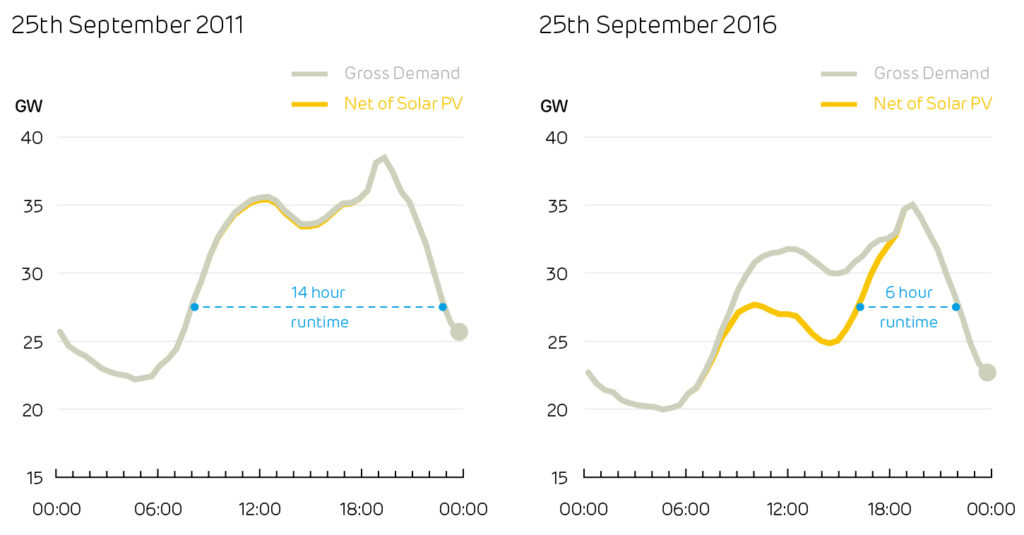Q3 2016: Challenging system stability
Download PDF
by Dr Iain Staffell – Imperial College London
The move from dispatchable fossil towards weather-dependent renewables is forcing the power system into new territory.
Britain experienced its lowest ever demand net of renewables, due to high wind and low demand overnight on Sunday 21st of August.
At its minimum, less than 13 GW came from synchronous generators, the spinning turbines that act as shock absorbers for the system. Of this, only 4.7 GW were flexible plants (i.e. non-nuclear). Prior to 2013, this minimum had never fallen below 10 GW. Renewables are reducing the need for conventional supply, while consumption is falling 1.5% per year.
The chart below compares September 25th in 2011 and 2016: both Sundays which averaged 15.5–16°C. Demand was 3 GW lower in 2016 because of improving efficiency and other societal changes. Solar PV reduced net demand by a further 5.5 GW at its peak, pulling daytime demand down to levels previously seen overnight.
The resulting shape of net demand (red line), which dispatchable generators must follow, is very different from five years ago. The daytime peak from 8 AM to 10 PM has been replaced by a much shorter evening peak starting at 4 PM. 10 GW of dispatchable plant had to ramp up in the afternoon, but these were only needed for six hours instead of 12 hours or more, meaning they have to charge more per hour to recover their start-up costs.
Electricity demand, gross and net of solar output on the same day, five years apart:

Authors: Dr Iain Staffell, Professor Richard Green, Dr Rob Gross and Professor Tim Green